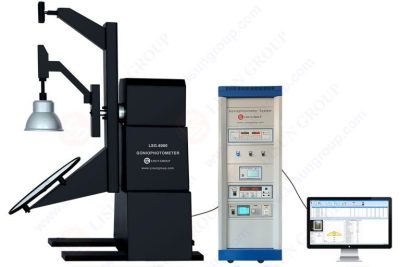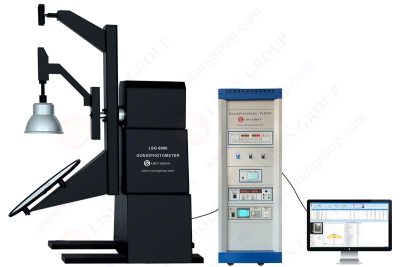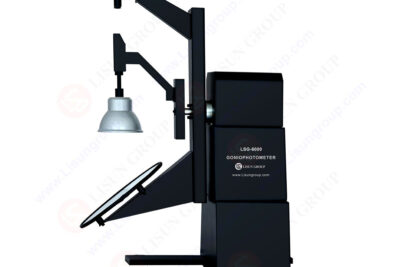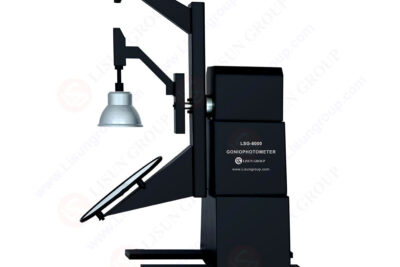
The current LED lighting systems no longer have bare power and brightness values in printed packets or packaging. End users require real-life lighting behaviour, i.e. what is the width of the beam, how evenly illuminated an object is, and at what currents will the light remain constant. These values are a subject of laboratory measurements done with a specialized device called a goniophotometer, w...

Professional lighting evaluation requires correct measurement of luminous distribution and beam shape, light intensity distribution, uniformity and directional output. In current illumination systems, total lumens are no longer a significant consideration and rather accurate angular distribution of light is used to establish compliance, visual comfort, energy efficiency and harmonious beam in prac...

Abstract With the rapid development of lighting technology, various lighting products such as LED light sources, plant growth lights, and HID light sources have increasingly high requirements for the accuracy and comprehensiveness of optical parameter testing in the production, R&D, and quality inspection processes. The LM-79 Vertical Goniophotometer Testing System, as a professional optical p...

Abstract Goniometer light measurement serves as the cornerstone of accurate optical performance evaluation for solid-state lighting (SSL) products. With the 2025 release of ANSI/IES LM-79-24, the latest iteration of SSL photoelectric testing standards, manufacturers require advanced goniometric systems to meet updated regulatory demands while maintaining compatibility with prior benchmarks like LM...

Introduction In the rapidly advancing field of LED lighting, the LED Tester has become an essential tool for ensuring that light sources meet rigorous international standards for performance and efficiency. LEDs, renowned for their high efficiency, energy savings, and environmental benefits, are widely utilized in applications ranging from indoor and outdoor lighting to display technologies, agric...

Abstract In the field of optical measurement, two key instruments—LISUN’s vertical goniophotometer and the standard illuminance meter—play indispensable roles. Although their functions and applications differ significantly, they share a strong technical relationship that enables them to complement each other in various lighting engineering projects. This article presents an in-depth analysis...

Introduction In modern technology and industry, the precise measurement of light intensity plays a pivotal role. Whether in lighting engineering, optical equipment manufacturing, or scientific research, the phrase “intensity of light is measured in” serves as a fundamental yet crucial concept. Understanding the units used to measure light intensity and their applications not only enhan...

Introduction Luminous intensity measurement is a critical parameter in evaluating the performance of lighting systems, ensuring compliance with standards, and optimizing the design of lighting products. With the increasing complexity of modern lighting solutions, measuring luminous intensity across multiple angles and positions is essential for accurate characterizations of light distribution. Thi...

In today’s world, the precise measurement of lumens is crucial in determining the efficiency and effectiveness of lighting systems. With the rise of LED technology and the increasing demand for energy-efficient lighting solutions, it is vital to have accurate and reliable methods to assess luminous flux. One of the most advanced tools for this task is the LISUN LSG-6000 LM-79 Moving Detector...

Abstract: The measurement of light intensity is crucial in the development and evaluation of lighting products, particularly in meeting international standards for photometric testing. This paper explores the LISUN LSG-6000 LM-79 Moving Detector Goniophotometer (Mirror Type C), an advanced system designed to provide accurate and reliable photometric data. The instrument fully complies with the req...

In 2019, ANSI and IESNA jointly released the ANSI/IES LM-79-19 standard, establishing a critical benchmark for the LED solid-state lighting (SSL) industry. Over five years later, in 2025, the lighting industry is once again undergoing a major transformation with the release of the latest version of the LM-79 standard – ANSI/IES LM-79-24 – jointly issued by the American National Standa...

Abstract: Luminous intensity measurement plays a critical role in the performance evaluation of lighting products, and the use of a full-space distribution goniophotometer is an essential method for assessing light distribution. The LISUN LSG-6000 LM-79 Moving Detector Goniophotometer (Mirror Type C) is a leading instrument in this field, specifically designed for accurate luminous intensity meas...